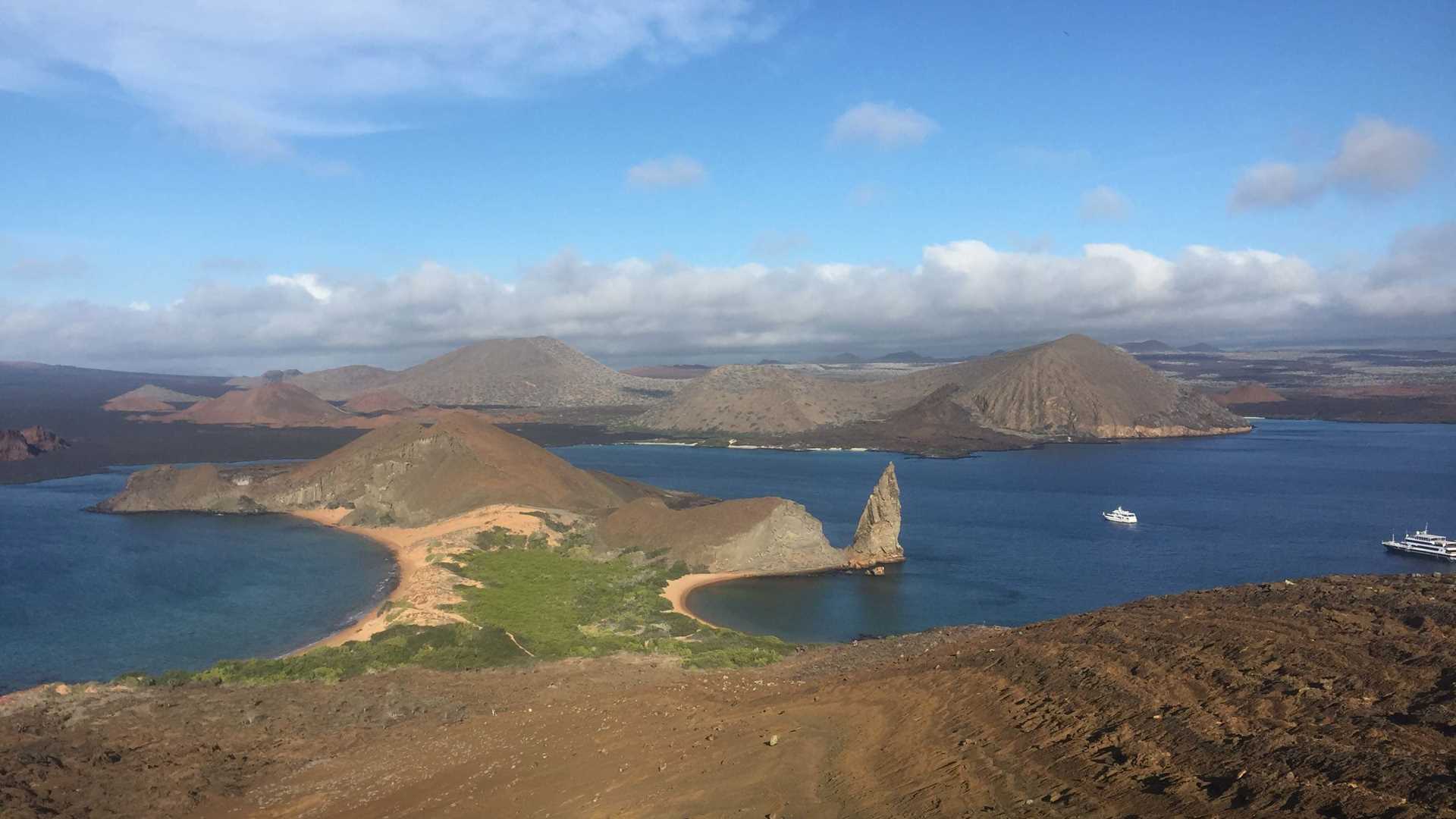Located just off the coast of Santiago, Bartolome is one of the most famous islands in the Galpagos archipelago, and its Pinnacle Rock is an iconic landmark often photographed. Bartolome received its name after Lieutenant Sir Bartholomew James Sullivan’s arrival to the Galapagos in 1835 onboard the HMS Beagle. As it was then, an abundance of wildlife can be found today, and as we approached, anticipation was high for wildlife encounters along and within its crystalline waters.
With the first beams of sun and soft winds, we headed to Bartolome with on a mission to reach the summit of the island, and enjoy one of the most spectacular views in the Galapagos. Compared to the main islands, Bartolome is quite small, but its geological formations are striking. At times, the landscape gives the impression of being on another planet such as mars, or the moon. The terrain’s appearance tells the story of how these oceanic islands were created. After breakfast, we continued our morning expedition with some snorkeling along the shallows, having a chance to observe whitetip reef sharks, stingrays, a great number of colorful fish such as burito grunts, dusky chubs and a huge school of black-striped salemas.
In the afternoon, National Geographic Islander repositioned and headed toward Rabida island, located southwest of Santiago. As soon as the anchor was dropped, a group of guests eagerly headed to the reddish beach and swam along the calm and transparent waters. Others discovered the secrets of the island via paddleboard or kayaks. We saw blue-footed boobies, American oystercatchers, and to the delight of many guests, sea turtles and Galapagos sea lions. We also came across a small lagoon behind the beach where two American flamingos and several pintail ducks fed on crustacean. With the last beams of sun we returned to the ship, tired, but immensely happy after an incredible day in this natural paradise called the Galapagos.







